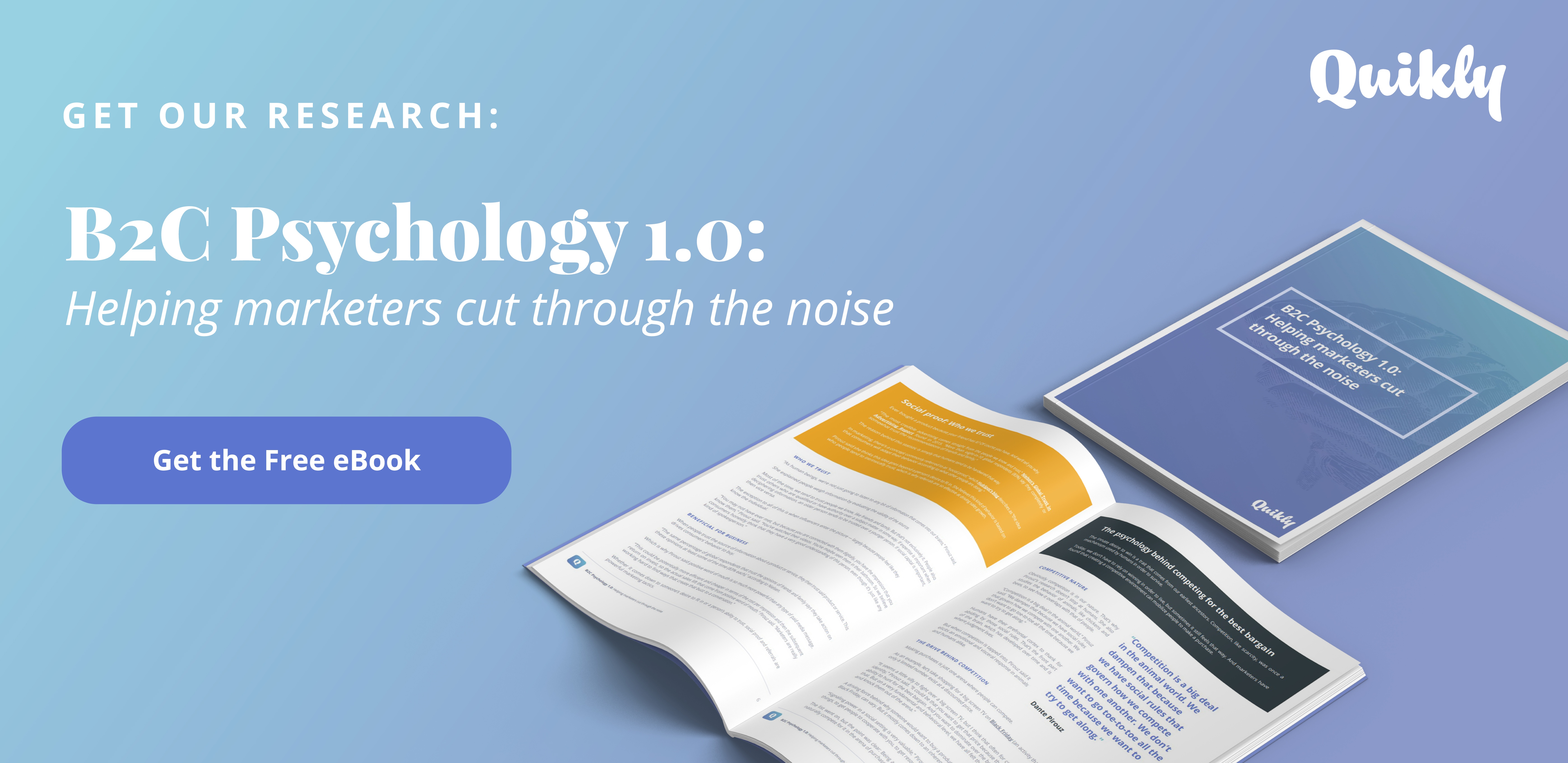
How to increase email marketing conversions, according to psychology

While marketing psychology practices have certainly evolved over the years, certain psychological principles hold true. Some have proven to be successful in helping brands consistently reach email marketing goals.
Here are four of them, along with creative ideas for each. These psychology principles can help you make the most of your email marketing campaigns and increase any conversions you're trying to drive within them.
1. Social Proof
No one likes having a fear of missing out (FOMO), and this is especially true in the world of consumerism. Confirmation of this fact, social proof is the idea that humans follow the influence of others.
The more people who enjoy a brand’s identity, products or services, the more interest is likely to grow from the general public.
This psychological principle can be used in content marketing to gain more email subscribers or boost conversions — from open rates to click-throughs.
If you’re trying to drive more email subscribers, for example, you could share how many sign-ups you've gotten for your email list already. When consumers see that others have signed up, it's a form of social proof.
If you’re trying to drive higher open rates, include a piece of information in your subject line that validates what’s inside from a social aspect. For example, let's say your best-selling shirt is inside — make sure to call that out.
Or, when you’re trying to boost conversions around purchase calls-to-action (CTAs) within emails, share numbers of how many others have purchased so far.
Testimonials are also a common marketing strategy that can be added to emails to help put social proof to use.
2. Anticipation
Marketers have already noticed that by introducing consumers to a scheduled event or product release, customers are more likely to spend brain power thinking about it.
This can hold true for email marketing strategies, too. Anticipation doesn’t have to be a one-off tactic, only to be used on special occasions. You can also tease out things like upcoming content, to help build anticipation around a subscriber's next email and support conversion rate optimization once it's delivered.
Or, if you’re trying to gain more email subscribers, drive anticipation around the content you’ll send. You could also use rewards to build anticipation, by telling potential new subscribers they’ll get a “surprise” reward after they opt-in for emails.
There are all kinds of ways to leverage anticipation around your emails and digital marketing in general. And it can be a fun way to keep consumers motivated when you do.
3. Competition
It’s ingrained in us as humans to be motivated by competition. So why not use this natural response to heighten excitement around your promotions and email marketing?
When trying to boost email acquisition, tell your target audience that the fastest 50 to sign up for emails today get limited-time rewards. If having consumers compete against one another doesn’t align with your brand, you can also tap into competition by having them compete against a clock or themselves. (“Sign up for email notifications in the next 10 minutes to get a limited-time reward.")
It’s worth calling out that when leveraging incentives to drive competition, the reward doesn’t always have to be significant -- the element of competition can be fun and motivating in itself.
4. Scarcity
Scarcity occurs simply when there’s a limited amount of something. Research has it that the motivator’s intense effect on humans dates back to the days of hunters and gatherers when critical supplies like food and shelter were limited. Today, scarcity can motivate action, a sense of urgency and perceived value among your customers.
Most often, scarcity comes through in emails through the use of limited-time offers or other time-sensitive opportunities.
You can also use it to support your email marketing goals by offering a limited number of incentives for any conversion you need to strengthen. For example, that earlier idea of offering rewards for the first 50 customers who sign up for email? It was also leveraging scarcity.
If you really wanted to get creative with your email marketing, you could also test out offering only a limited amount of slots for new subscribers each day, and any consumer who gets one of those slots lands not only a spot on your email list, but your absolute best discounts as part of that.
Leveraging a limited amount of time, opportunities or rewards are all great ways to tap into scarcity and maximize consumer motivation.
This is only the beginning of how you can use psychology like social proof, anticipation, competition and scarcity to increase email marketing conversions. Check out our "B2C Psychology 1.0" eBook for more on each principle.

Lindsay Keener is a brand journalist for Quikly. She covers stories that help to inform and educate consumer-facing marketers.

